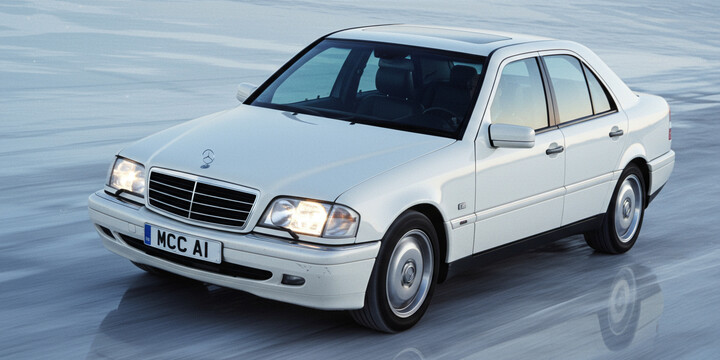
MERCEDES-BENZ C CLASS (2000-07) C270 4DR SALOON 2.7CDI CLASSIC
The MERCEDES-BENZ C CLASS (2000-07) C270 4DR SALOON 2.7CDI CLASSIC is a well-regarded luxury saloon that offers a refined driving experience combined with the practicality of a four-door sedan. Known for its comfortable interior, solid build quality, and impressive fuel efficiency for its class, this model is popular among those seeking a reliable and stylish vehicle for everyday commuting, family outings, or executive transportation. The C270 2.7 CDI Classic, in particular, strikes a balance between performance and economy, making it an attractive choice for drivers who value comfort without sacrificing cost-effectiveness.
In the UK market, the C270 Classic tends to attract drivers who appreciate premium features and a smooth driving experience. Compared to rivals in its class, such as Audi A4 or BMW 3 Series, this Mercedes offers standout reliability, a reputation for durability, and a premium feel that continues to appeal to used car buyers. With an average recorded mileage of around 81,596 miles and typically just one previous owner, this model often presents as a well-maintained vehicle in the secondary market. If you're considering a used Mercedes-Benz C-Class (2000-07), the C270 4DR SALOON 2.7CDI Classic remains an excellent choice for those looking for a comfortable, stylish, and dependable saloon.

average use

The recent mileage data for the Mercedes-Benz C-Class (2000-07) C270 4DR Saloon 2.7 CDI Classic indicates quite a diverse usage pattern. Half of the vehicles have recorded mileage between 120,000 and 130,000 miles, while the other half are in the 30,000 to 40,000 mile range. This suggests a wide variation in vehicle age, usage, or maintenance history within this model. Buyers and sellers should consider these mileage differences carefully, as they could impact vehicle value and condition.

vehicle values

The provided data indicates that for the Mercedes-Benz C-Class (2000-07) C270 4DR Saloon 2.7 CDI Classic, private sale prices are concentrated in two main price ranges. Specifically, 50% of the vehicles are valued between £0 and £1,000, and another 50% are valued between £1,000 and £2,000 in the UK. This suggests a significant clustering of vehicles at the lower end of the price spectrum, potentially reflecting the age, condition, or market demand for these models in the private sale market.

production years

The data indicates that for the Mercedes-Benz C-Class (2000-07) C270 4DR Saloon 2.7CDI Classic, the vehicles in the sample are evenly split between model years 2001 and 2002, each accounting for 50%. This suggests that during this period, there was a balanced distribution of these vehicles from the two model years, possibly reflecting similar production volumes or market presence in these years.

colour popularity

The data indicates that for the Mercedes-Benz C-Class (2000-07) C270 4DR Saloon 2.7CDI Classic model, the main paint colour is evenly split between White and Red, each accounting for 50% of the vehicles. This equal distribution is quite interesting, as it suggests no dominant colour preference within this sample, highlighting a diverse colour preference among owners of this model.

ownership cycle

The data indicates that for the Mercedes-Benz C Class (2000-07) C270 4DR Saloon 2.7CDI Classic, there are two primary groups of registered keepers. Half of these vehicles have had just one registered keeper, suggesting they may have been owned by the same individual or entity for an extended period. The remaining 50% of the vehicles have had three different registered keepers, which could indicate higher turnover or multiple owners over time. This distribution provides some insight into the vehicle's ownership stability within this sample.

engine choices

The data indicates that all Mercedes-Benz C-Class (2000-07) C270 4DR Saloon 2.7CDI Classic vehicles in the sample are equipped with a 2.685-litre engine and exclusively use diesel fuel. This uniformity suggests that the 2.7-litre diesel engine was the standard specification for this model in that period, with no alternative engine capacities or fuel types observed in the dataset.












